Smart Rainwater Diverter
You can read my research on rainwater harvesting. Most rainwater diverters struggle when the rain is really heavy and either clog up or overflow. None that I have seen can pass water through as quickly as a standard 68mm diameter rainwater pipe. Most have a very small exit pipe, to your water storage which means a lot of the water is not captured when the rainfall is really heavy. All of them have narrow gaps that quickly clog up. Large clumps of moss can be dislodged from my roof by both the weather and birds.
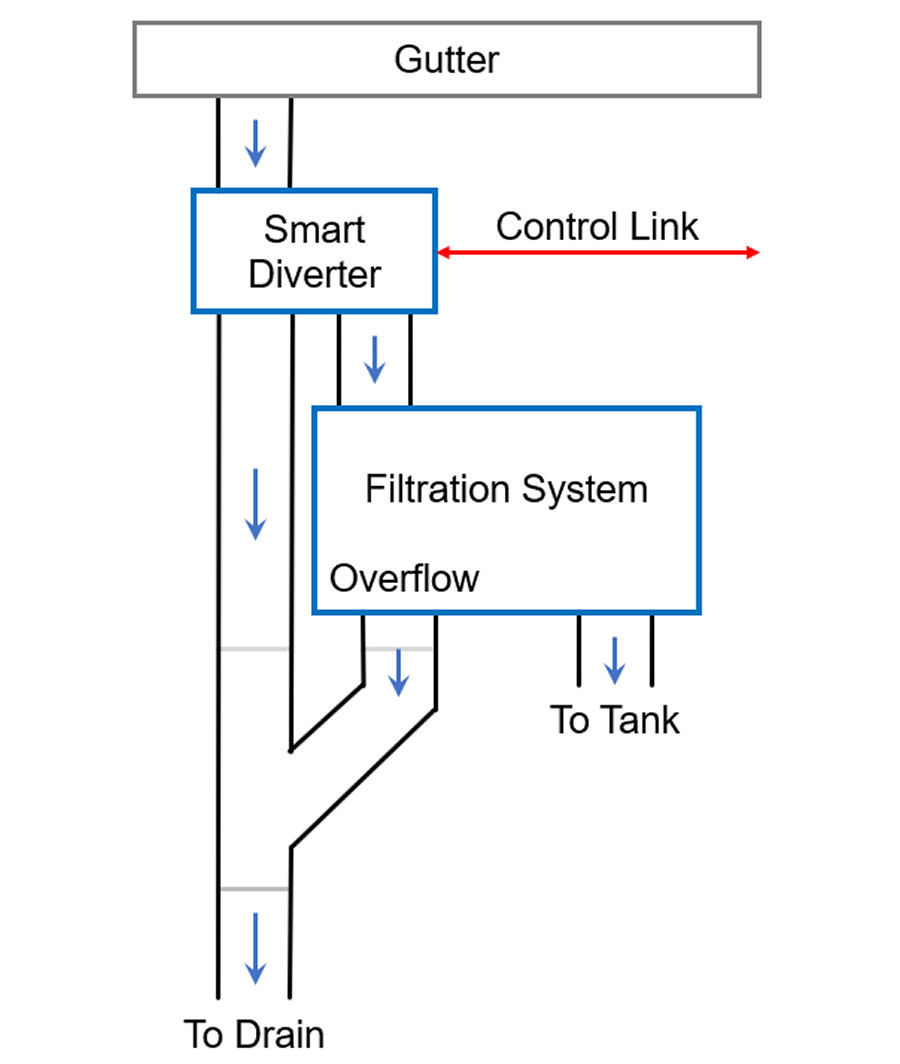
You can put a filtration system in place before the diverter and this does help prevent them getting clogged with moss and other debris from the roof but, they are then essentially filtering everything that comes off the roof and the filter will need emptying/cleaning often.
My preference is to have the filtration system after the diverter as it makes more sense. This means the filters are much less likely to become full with debris because the diverter will just pass the water and debris straight through when the tank is full. The filtration system no longer has to filter all the rainwater coming off of the roof. In the winter months, the water in the tank is not really used and it can remain full for a long time.
This approach also means that I can control the diverter much more intelligently based on when it last rained, last stopped raining, or based on other factors, to ensure that an initial heavy rainfall after many months of dry weather is not collected and will therefore not be passed through the filtration system.
This project aims to address all these challenges with a bespoke build that is also automated and connected to my contextual smart home. The whole installation is simpler by being in line with the existing gutter down pipe.
Requirements
- Sit in-line in a standard 68mm rainwater down-pipe (64mm internal diameter) and not interrupt or restrict the flow of water when not in use.
- Present minimal resistance to the flow of water when the diverter is in use (on), to ensure that it can't clog up with debris.
- Require no power when in a steady open or closed state.
- Provide a simple control interface.
- Maintain physical separation from the water/wet side and the drive motor and any electronics.
- Deliver an intelligent rainwater harvesting system that requires minimal maintenance and monitors itself for issues.
Design
The physical form of my diverter is being designed using Autodesk Fusion 360, so that it can be 3D printed and tested.
Enclosure
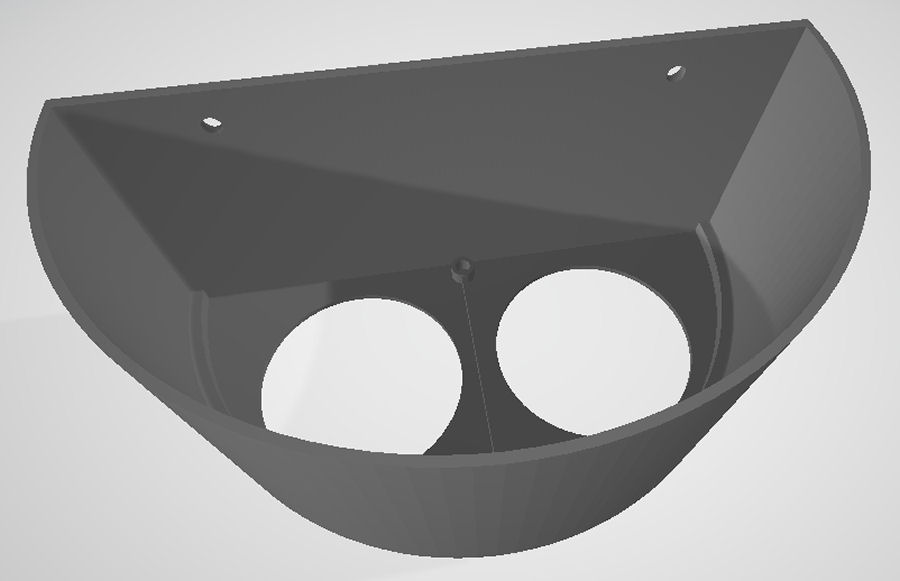
The main housing is a semi-circular design, with two mounting holes in the rear face. The water comes in via a top lid, vertically above the main exit hole at the bottom. This ensures there is minimal restriction of water when the diverter is not in operation (i.e. off). There are two bottom exit holes 64mm in diameter and their centres are 76mm apart.
An internal diverter rotates to divert water across and out of the second exit hole, to be collected in a tank.
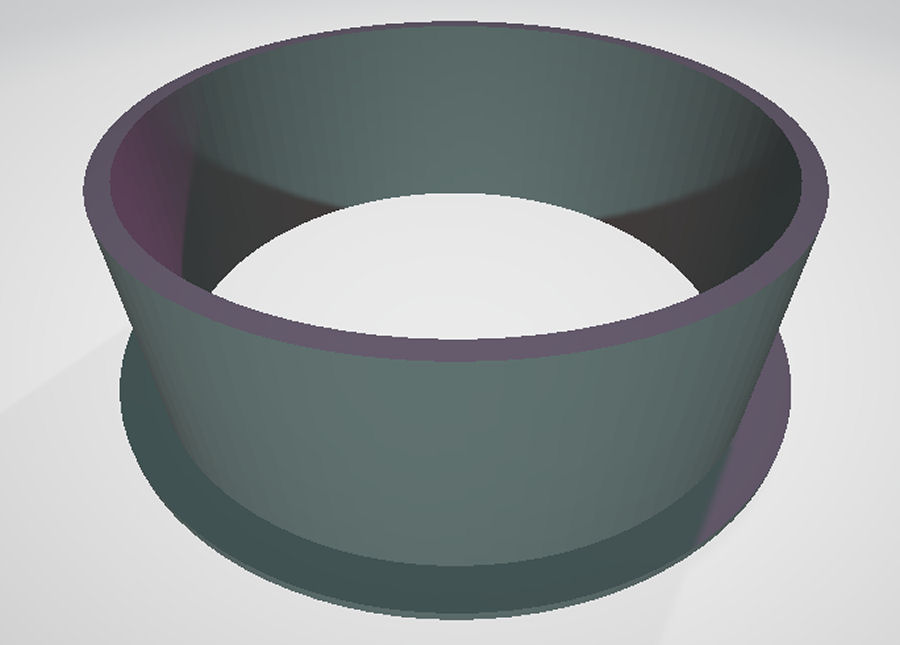
To simplify the 3D printing of the main enclosure, the bottom pipe connectors are separate parts that will be glued in place. These fit through the two bottom 64mm exit holes and down into the two exit pipes.
Diverter
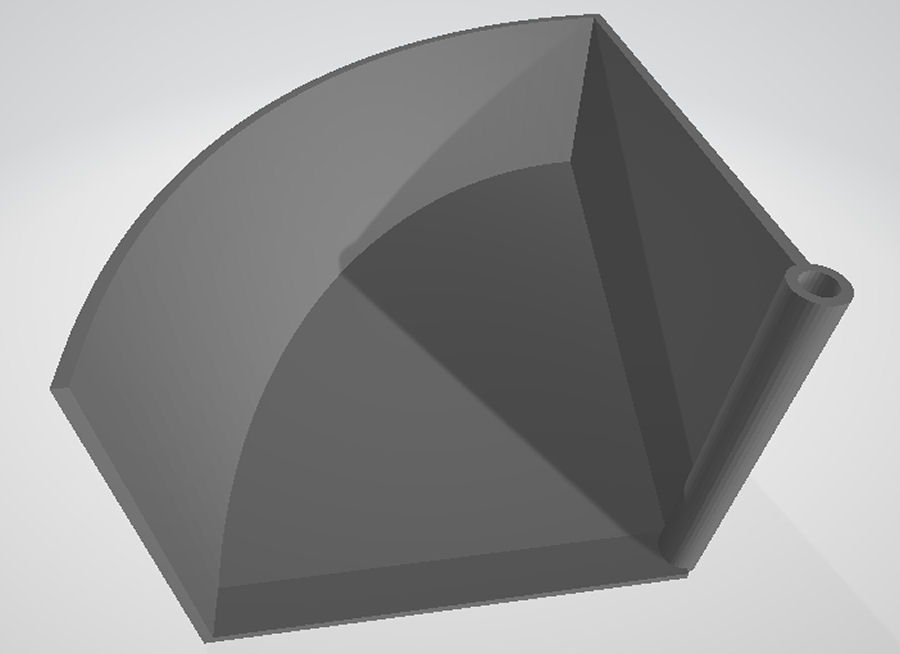
The diverter 'blade' rotates around a 5mm driveshaft and can be moved underneath the main inlet pipe. It has a sloping face, to divert the water over to the other side of the enclosure and down through the second outlet hole, which leads to the filtration system and onwards to the rainwater storage tank.
Lid & Motor
The lid encloses the 'wet side' of the diverter and is also the enclosure for the motor, switches and other electrical elements.
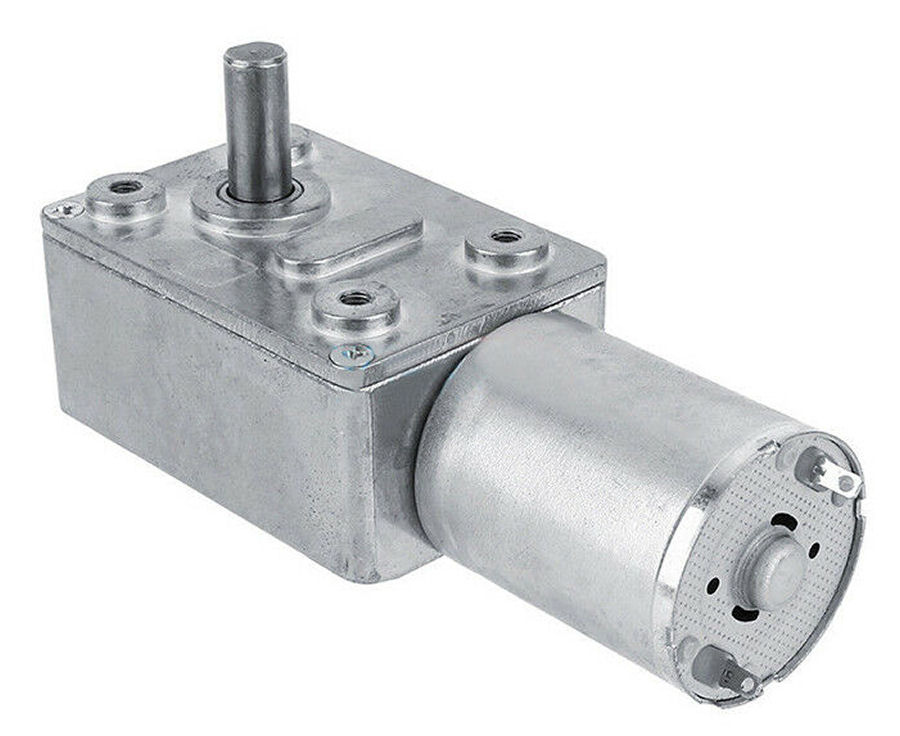
I'm using a reversible, high torque, worm geared motor that rotates at 3RPM at 12V. This equates to about 5 seconds to rotate the 'blade' the required 90°.
Control Interface
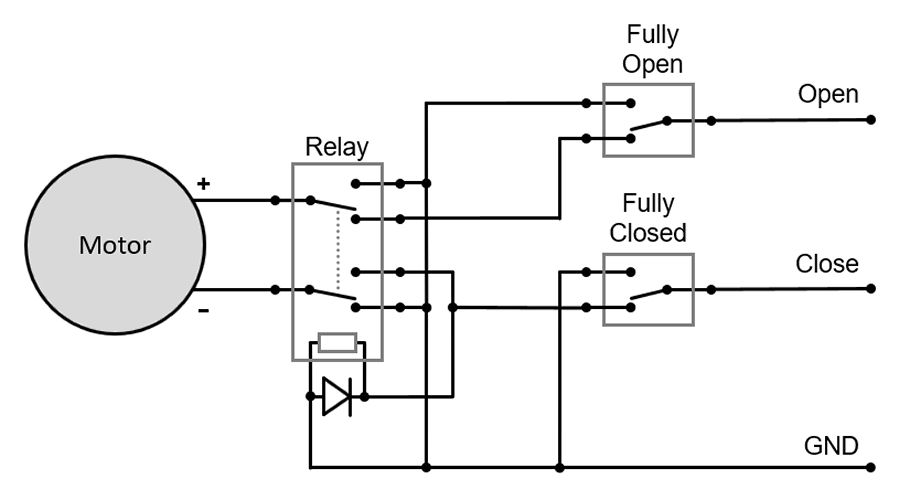
The control interface is a simple 3-wire connection. A common ground wire is used with two power lines. Power is applied to the 'Open' line one to turn the diverter on and applied to 'Close' line to turn it off. Two end-stop switches detect the fully on and fully off states and cut power to the motor and the relay, so that power is only used by the motor when the diverter is moving. When active, the relay basically reverses the polarity of the power to the motor and makes it run in the opposite direction.
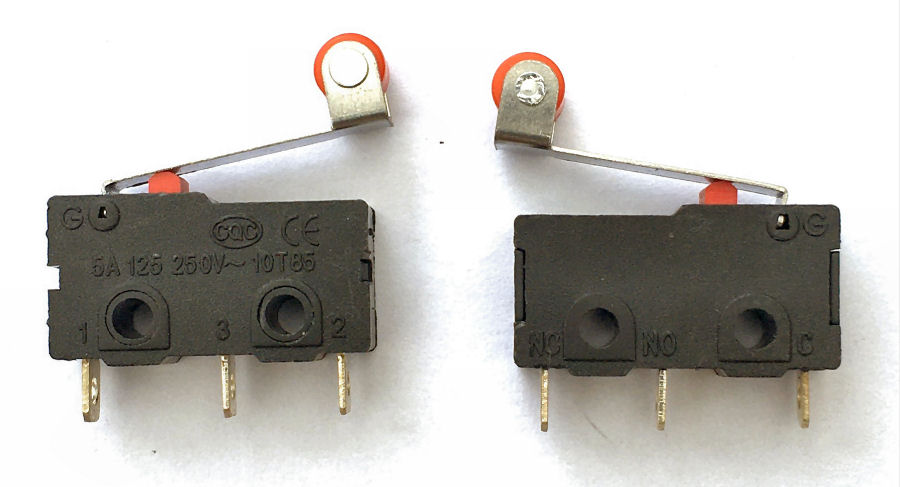
These micro-switches are used to detect the travel end points. They are just 20mm × 10mm.
Build
Pipe Connectors
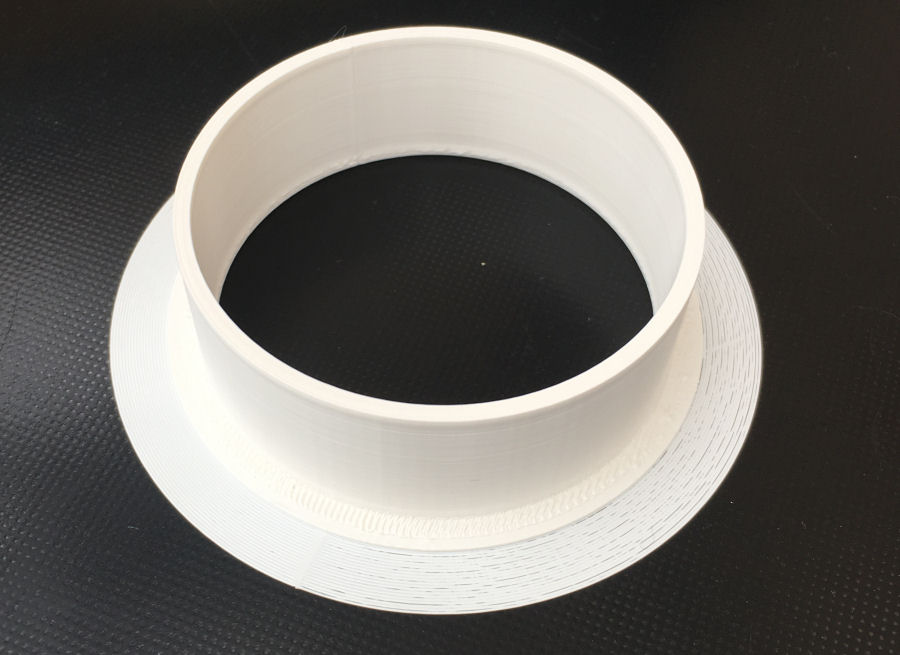
The first thing I did was to 3D print the pipe connector, to ensure it fits my standard 68mm pipe. This then allowed me to size the enclosure correctly. Note that this is printed with a brim, to improve adhesion to the build plate.
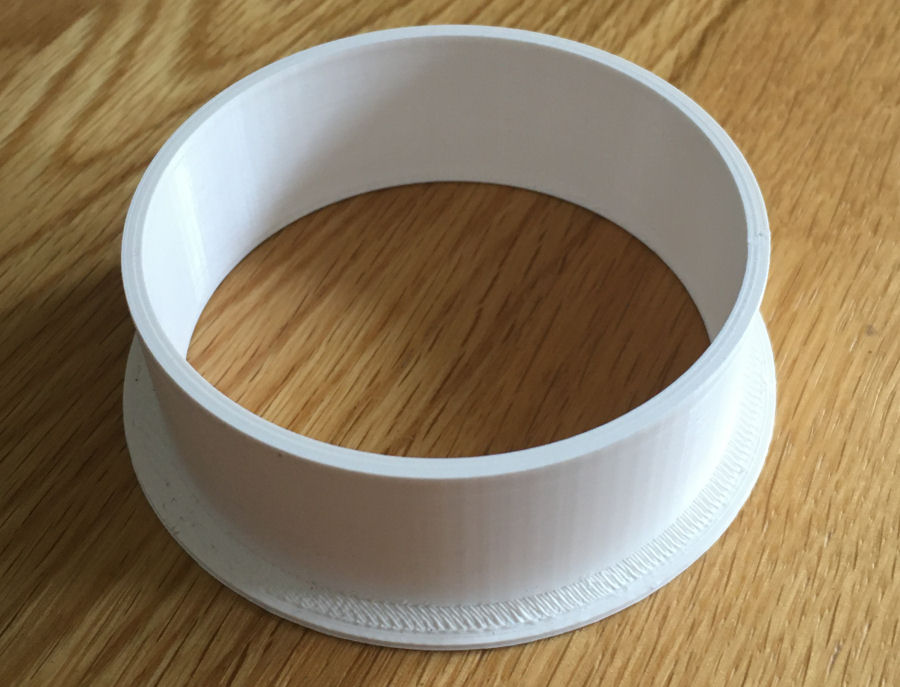
The pipe connector cleaned up. It has a 2mm wall thickness.
Motor

The motor arrived and is nice and compact, yet powerful. Testing with a 12V supply shows it to be very quiet and just the right speed of rotation for this application.
The motor has four 3mm fixing bolts at 18mm and 33mm centres. I've 3D printed a test lid to check the dimensions for the motor, needle and end stop switches. This seems to work well.
Needle

Attached to the motor spindle below the motor but inside the 'lid' is the 'needle'. This closes the micro-switches to detect each end point. This is my 3D design and this will be 3D printed to test the mechanical elements of the diverter before the whole thing is 3D printed.
Coupler
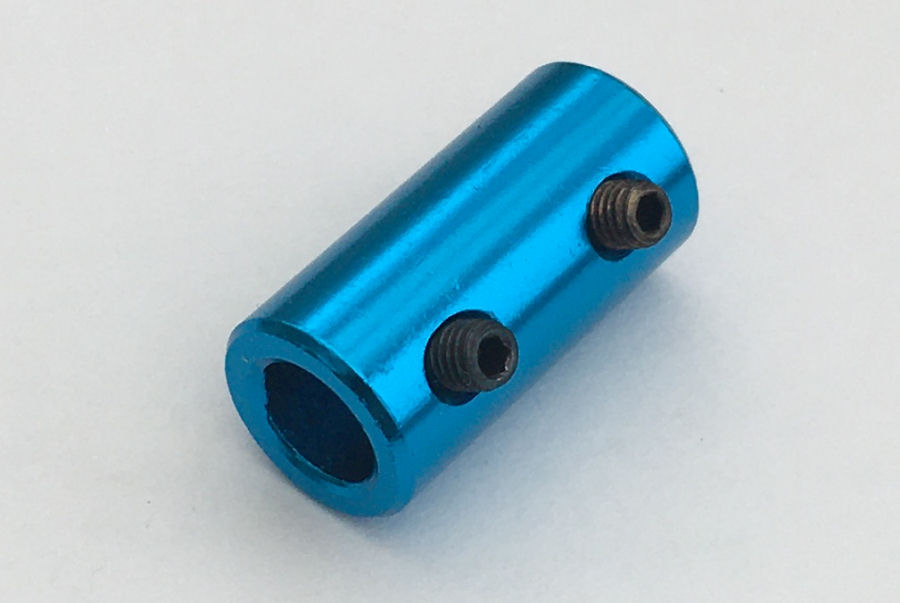
The motor spindle is attached to the diverter using this aluminium coupler.
Enclosure
The enclosure is going to be a 20+ hour print job!
Smart Home Integration

My contextual smart home already has a connected optical rain sensor, which is very accurate and reliable. It knows if it is currently raining, when it last started and stopped raining and how long it has rained for in each of the last 31 days. This means it can log daily rainfall and monthly rainfall.
For this project, my smart home models the following:
- 'Rainwater Diverter' - modelled as an 'Appliance' that is either 'On' or 'Off'.
Related to this project, my smart home already models the following:
- 'Rainwater Harvesting' - modelled as an 'Binary' sensor that is either 'On' or 'Off'. This detects if rainwater is exiting my rainwater filter exit pipe.
- 'Rainwater Filter Overflow' - modelled as an 'Binary' sensor that is either 'On' or 'Off'. This detects if the rainwater filter is clogged and rainwater is exiting via its overflow pipe.
- 'Rainwater Tank Full' - modelled as an 'Binary' sensor that is either 'On' or 'Off'. This is a float sensor that detects if rainwater tank is full.
- 'Rainwater Tank Level' - modelled as an 'Percentage', this sensor measures the water level in the tank.
My contextual smart home uses a controller to decide when the Rainwater Diverter is on or off. The controller makes it very simple to configure based on the status of my rainwater tank.
Notifications
It's a very simple task to enable any of the 400+connected to my contextual smart home to send a notification, simply by adding a notification flag in the NOT DEFINED file. I get a notification each time the diverter changes state.
Summary
My current challenges lie with the fact that PLA is not waterproof and I'm having to paint it, to test this prototype solution. Once I'm happy with my designs, I will 3D print them in a more suitable material, like ABS or PETG.
This project is closely linked to my rainwater filter project and more on this will follow soon.



